While there is plenty of beauty to be found in a slick passing move or a well-timed sliding tackle, when it comes to football, there is little doubt as to the real art: scoring goals.
German football journalist Javier Cáceres has spent the past two decades asking many of the game's biggest stars to draw their favourite goals. Most sketches were produced during formal interviews and others at chance meetings in hotel lobbies but, as any striker will tell you, they all count.
Cáceres -- who works for the Süddeutsche Zeitung newspaper -- has gathered sketches from some of the greatest names in the history of football, including Pelé, Franz Beckenbauer and Bobby Charlton (not to mention ESPN's Steve Nicol and Steve McManaman). Cáceres has compiled his huge portfolio of hand-drawn goals, all of which are signed by the artists, into a book entitled "Tore Wie Gemalt" ("Goals as Portraits").
It began in 2005 (the year YouTube was founded and long before the site became an extensive archive of goals) during an interview with former Chile international Leonel Sánchez. Cáceres asked the striker to describe the famous goal he scored for La Roja against the Soviet Union at the 1962 World Cup. After initially struggling to recount the build-up play, Sánchez instead drew the goal on Cáceres' notepad to fully illustrate the action.
"Afterwards, I thought 'wow!' and two things happened," Cáceres told ESPN. "To me, it [the sketch] had a certain aesthetical value and, on the other hand, I remember that the conversation turned in a completely new direction."
"[Sánchez] was more open to talk about his footballing life. And so I started to ask for the same thing with a lot of football players I interviewed since then."
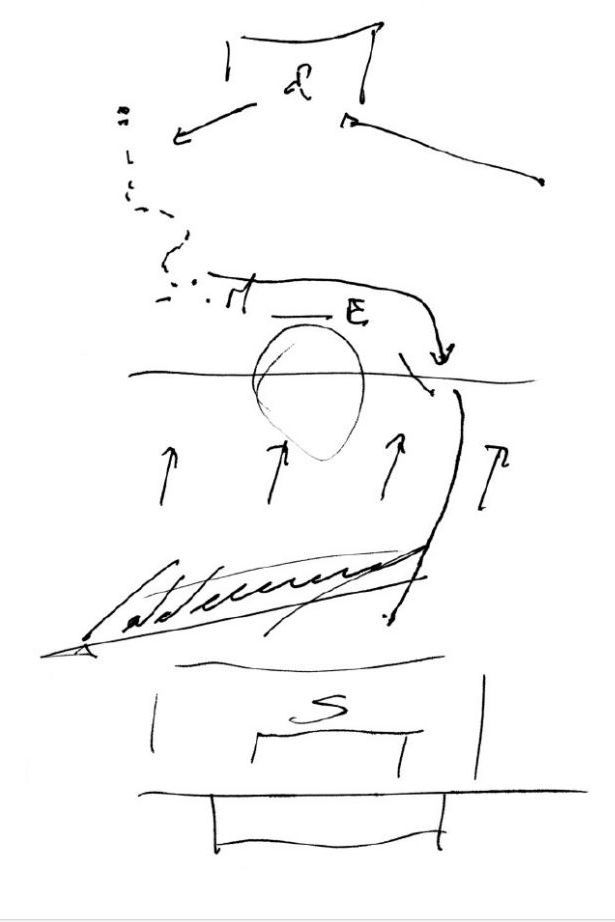
(c) Suhrkamp Verlag AG Berlin, "Tore Wie Gemalt" by Javier Cáceres
One of the most prominent goals included in Cáceres' book is Jorge Valdano's strike for Argentina (with an assist from the great Diego Maradona) as they fended off West Germany in the 1986 World Cup final.
Not only was the goal scored on the grandest stage (Mario Götze also contributes a drawing of his 2014 World Cup-winning goal for Germany) but former Real Madrid forward Valdano -- a noted footballing philosopher and published author -- elucidated in great detail while sketching the pitch.
"As Valdano puts it, every goal has a story, and often an untold story," Cáceres said. "When the players reimagine their goals, they often associate things that are not common knowledge.
"Valdano's sketch is my personal favourite. I think he drew the whole pitch because it was a very epic goal. He even incorporated his autograph into the drawing."
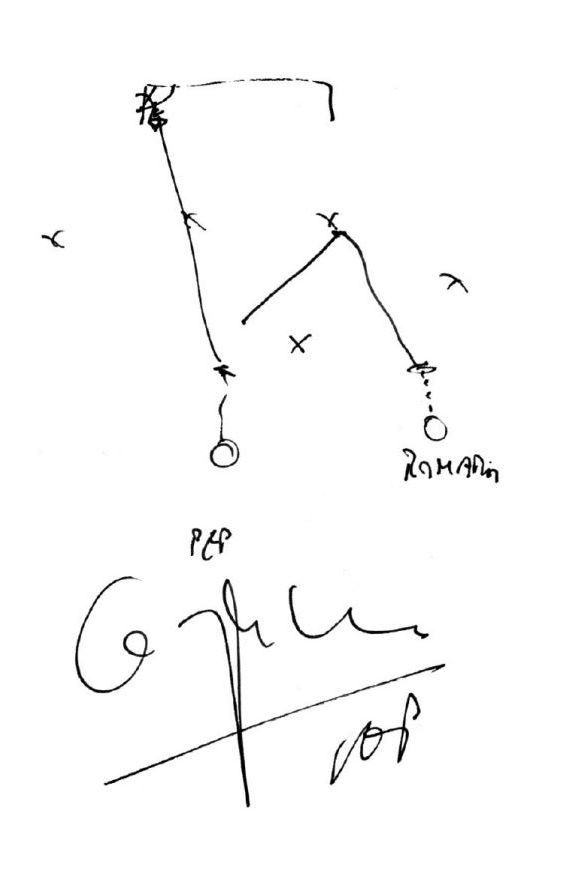
(c) Suhrkamp Verlag AG Berlin, "Tore Wie Gemalt" by Javier Cáceres
Though hardly famed for his goal-scoring prowess as a player, Pep Guardiola also makes an appearance in the book and the Manchester City coach's depiction of his handiwork is precisely as fastidious and comprehensive as you might imagine.
"I noticed the different styles of the way people drew the goals," Cáceres said. "With people like Guardiola, I was actually very impressed with how technically accurate their drawings were despite the goal being a very, very long time ago."
"I showed him my drawings by Pelé and Bobby Charlton and he chose to draw his goal against Atlético Madrid [in 1991], which happened to be the first he scored for Barcelona -- a fantastic goal, by the way."
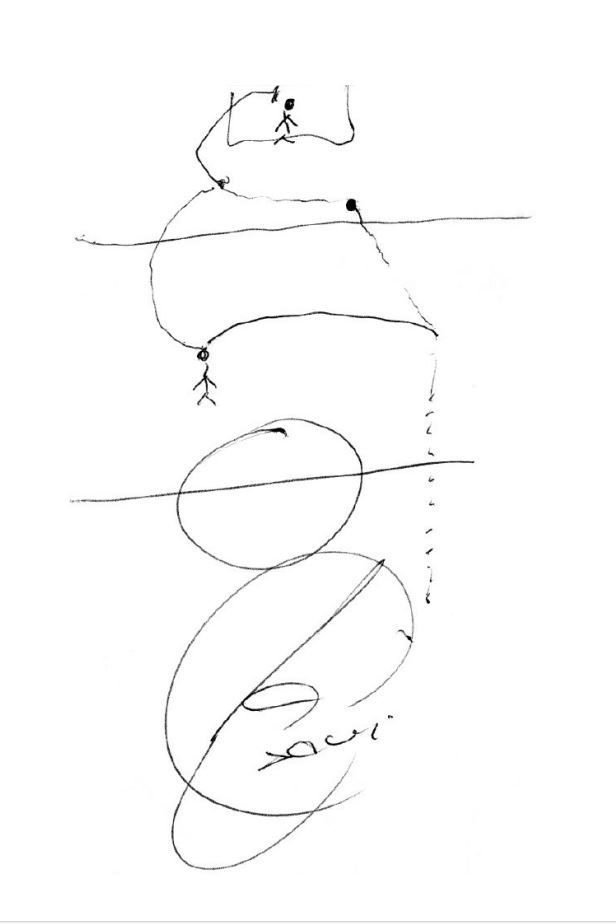
(c) Suhrkamp Verlag AG Berlin, "Tore Wie Gemalt" by Javier Cáceres
Guardiola isn't the only Barça stalwart to appear in the book. His fellow club legend Xavi Hernández also sketched one of his most memorable goals for the Catalan club.
Xavi chose to recreate the excellent lob he sent over Iker Casillas to steal a late 2-1 win over Real Madrid in El Clásico at the Bernabéu in 2004. Cáceres was equally impressed by the Spaniard's expressive interpretation of the perfect assist from Ronaldinho and Xavi's delicate finish.
"Xavi's drawing is very nice," he said. "It's a lot more artistic than Guardiola [which is a more technical image] but it still gives a very good reproduction of how it happened."
The former Barça midfielder and coach deploy simple, crude stick figures to set the scene (for example, Casillas' hurriedly drawn legs appear to be detached from the rest of his body) but the approach play and movement is plotted amid a flurry of scribbled lines, abstract flourishes and dotted trails.
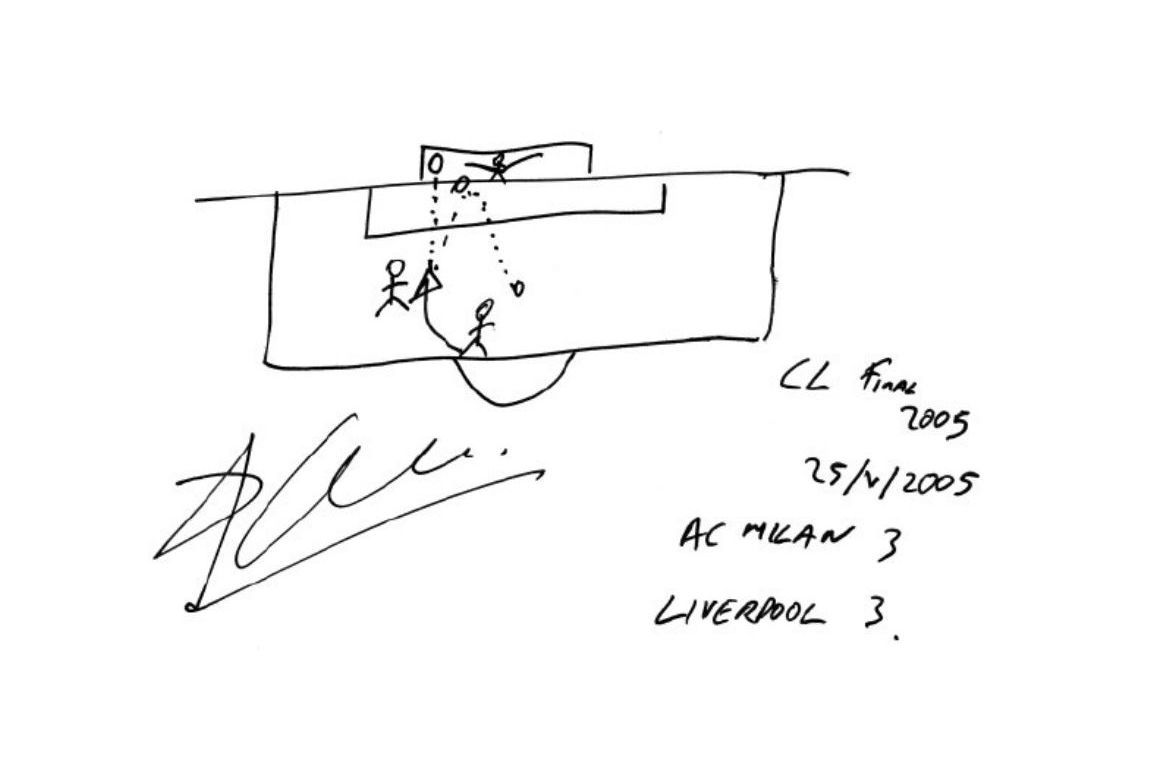
(c) Suhrkamp Verlag AG Berlin, "Tore Wie Gemalt" by Javier Cáceres
There are many vital, memorable and even historic goals included in Cáceres' book, including a flurry of goals scored in the UEFA Champions League finals.
The Chilean journalist recalled asking Xabi Alonso to sketch his favourite goal during their first meeting, shortly after the latter had arrived in the Bundesliga with Bayern Munich in the summer of 2014.
Alonso selected his pivotal penalty for Liverpool against AC Milan in the 2005 Champions League final, in which the Spain midfielder had his initial effort saved by Dida only to sweep home the rebound on the Reds' historic comeback in Istanbul.
"It was very funny," Cáceres said. "Alonso told me he remembered that the Milan goalkeeper had very big hands and that after Dida had parried his first attempt, he had to run faster than he'd ever run before in his life to score the follow-up."
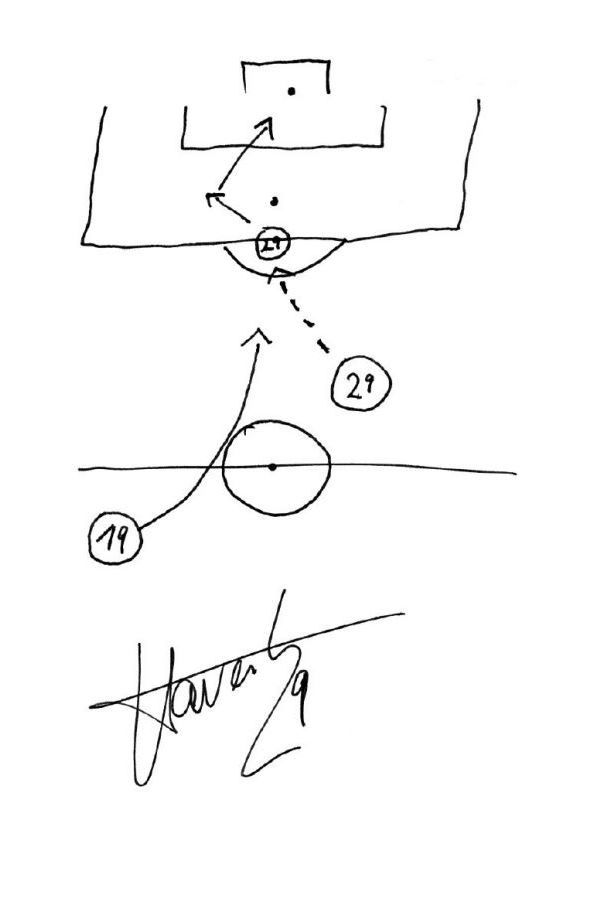
(c) Suhrkamp Verlag AG Berlin, "Tore Wie Gemalt" by Javier Cáceres
Alonso isn't the only Champions League winner to have a momentous goal in Cáceres' book. Kai Havertz provided one of the few contemporary goals in the vast collection of sketches.
The Germany forward picked the goal he scored for Chelsea against Manchester City in the 2021 Champions League final which sealed a 1-0 win and European glory for the Blues. Havertz, now at Arsenal, made his sketch very detailed, down to the jersey numbers of the players involved.
"The reason that there aren't many current players in the book is that most of them still dream of scoring their best-ever goal -- that it might still be yet to come," Cáceres said. "But come on, Kai has scored in a Champions League final that ended 1-0.
"Maybe the only way he can beat that is to score a winning goal in a World Cup or European Championship final but that isn't going to be easy. So for now, that is of course his most important goal."
For all of the stellar names included in Cáceres' collection, there are a few omissions that, alas, will now be beyond his grasp.
"There were some people I tried to chase," he said. "One was Diego Maradona and another was Johan Cruyff, but it wasn't possible."
Cáceres came close to meeting Maradona on the set of a TV show in Brazil years ago. But, characteristically for the Argentina icon who died in 2020, he arrived dramatically late to his own show.
"I got invited by chance to a TV show that [Maradona] was hosting together with [Uruguayan football analyst] Victor Hugo Morales," Cáceres said. "But he got stuck in traffic in Rio de Janeiro and didn't manage to get there. I had hoped to meet Maradona but the show didn't happen. I was sitting there for an hour.
"There was a second recording [scheduled] so I thought I might be able to meet him before he entered the next studio, but he was late for that, too.
Maradona's delayed arrival for the filming was due to him taking pictures with people who worked at the TV station, including the cleaning staff. While he made everyone's day by giving them a chance to meet him, it meant there was no time for him to put pencil to paper for Cáceres to add a prize item to his collection.
"He ran past me and into the studio and that was the closest I got to him," he said. "Pity."
